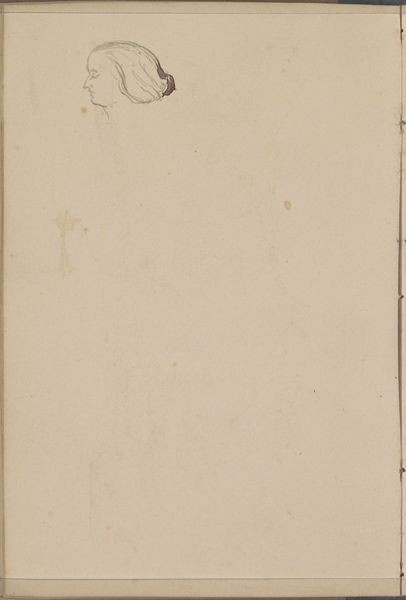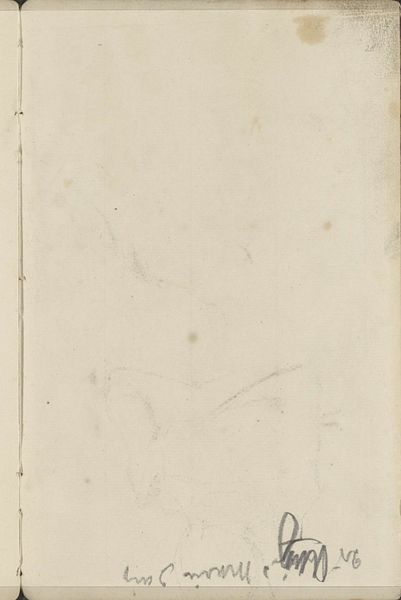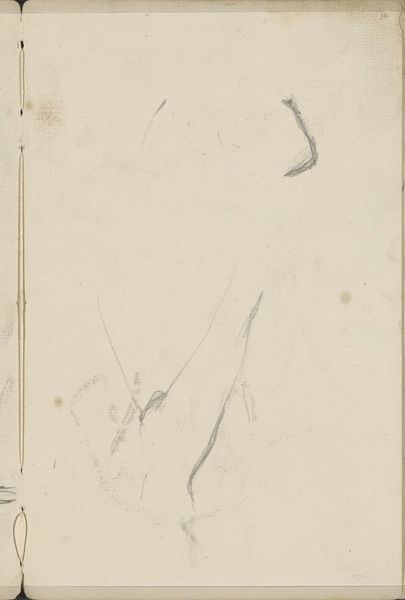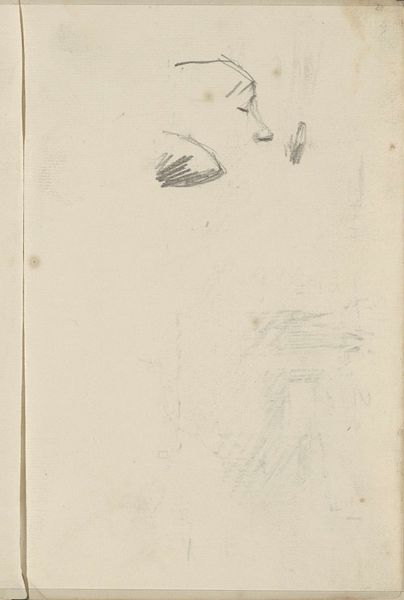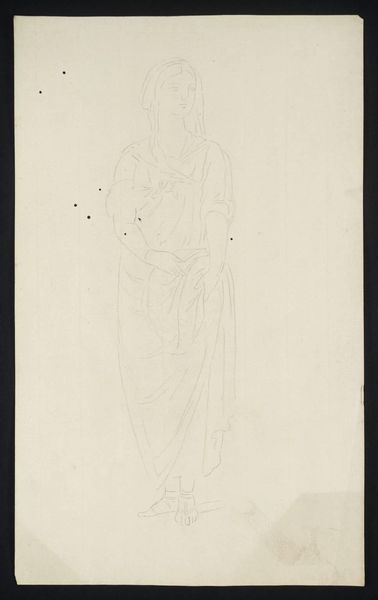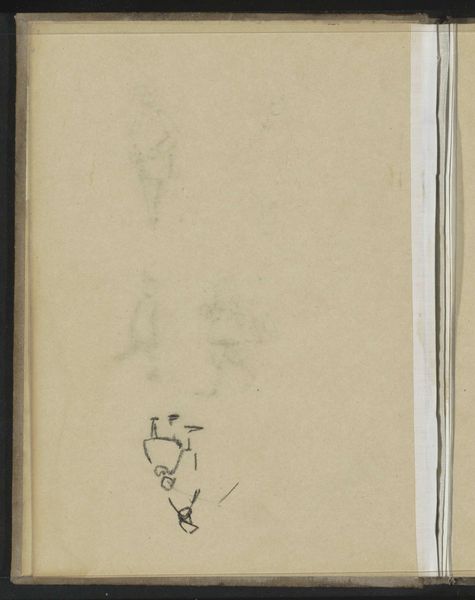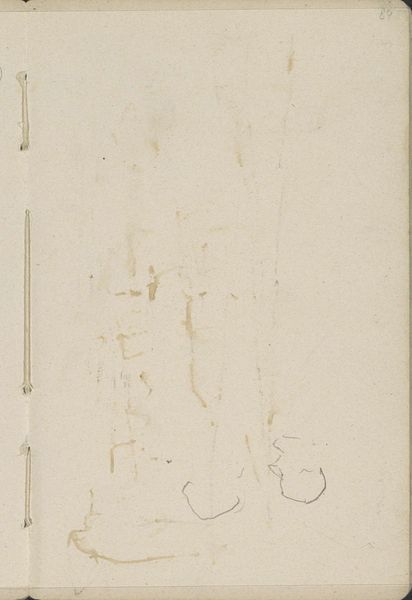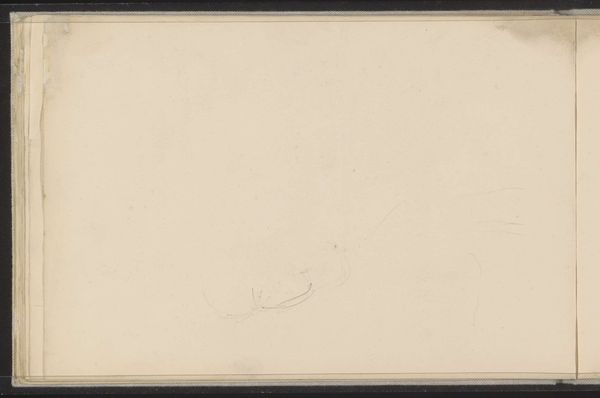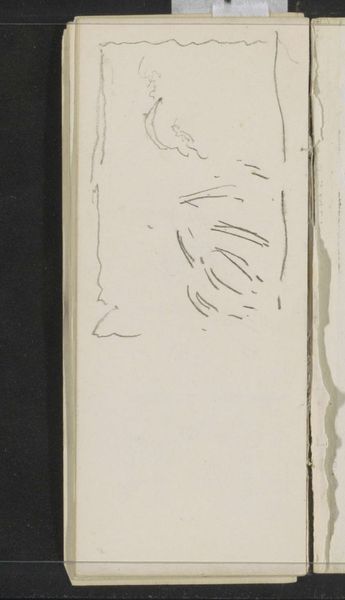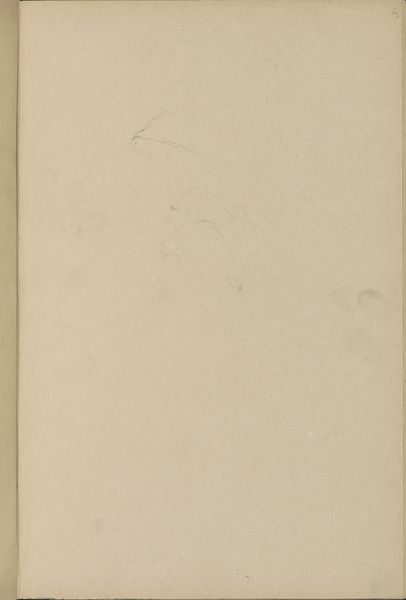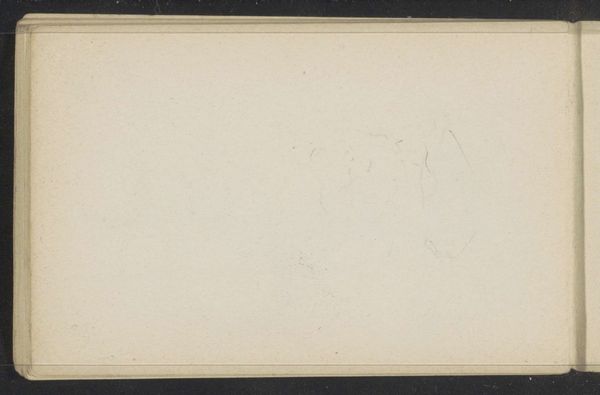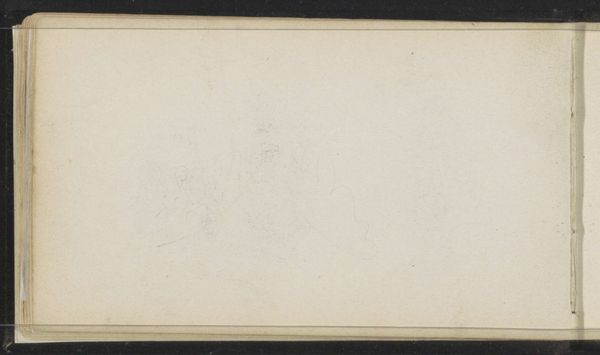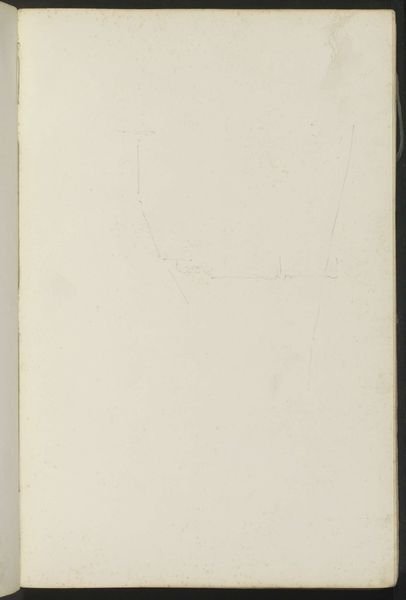
drawing, pencil, graphite
#
portrait
#
pencil drawn
#
drawing
#
light pencil work
#
face
#
pencil sketch
#
figuration
#
hand drawn
#
pencil
#
line
#
graphite
#
academic-art
Dimensions: Dimensions unavailable
Copyright: Public Domain
Curator: This is an interesting sketch. Here we have "Profile (from Sketchbook)" created between 1811 and 1893 by John William Casilear. It's currently held at the Metropolitan Museum of Art. Editor: Yes, it’s a very delicate thing. A light pencil sketch; just the barest suggestion of a face emerges from all that blank space. Curator: It offers such insight into Casilear's academic approach to art, doesn't it? This wasn’t just artistic dabbling; it represents the labor involved in perfecting the fundamentals. Editor: I see it more as an artifact of process. Think about the specific grade of pencil he used, the paper stock... Where was it sourced? The repetitive labor required in pencil production and paper mills reflects a wider context of manufacturing in the 19th Century. This humble profile carries all those economic and social ties within it. Curator: And we have to consider what the purpose of these preparatory sketches served, the networks in which Casilear worked. Were these intended for public view, as a means of displaying the artistic progress achieved by mastering those industrial supplies you mentioned? It is revealing in terms of art world social history. Editor: Yes, but isn’t the sketch itself interesting, the medium carrying this history, as an aesthetic form emerging directly out of industrial capability and the expansion of accessible drawing supplies? It makes me wonder, what drawings of his did Casilear chose to put on view, and how they might change when taken into consideration next to these more mundane sketches. Curator: Ultimately, it illustrates Casilear’s contribution to American art in his period and artistic journey within the cultural context. Editor: Absolutely. I love how this sketch highlights the relationship between raw material and final presentation. It forces you to examine how things are made, and the implications for how and what is shown.
Comments
No comments
Be the first to comment and join the conversation on the ultimate creative platform.
